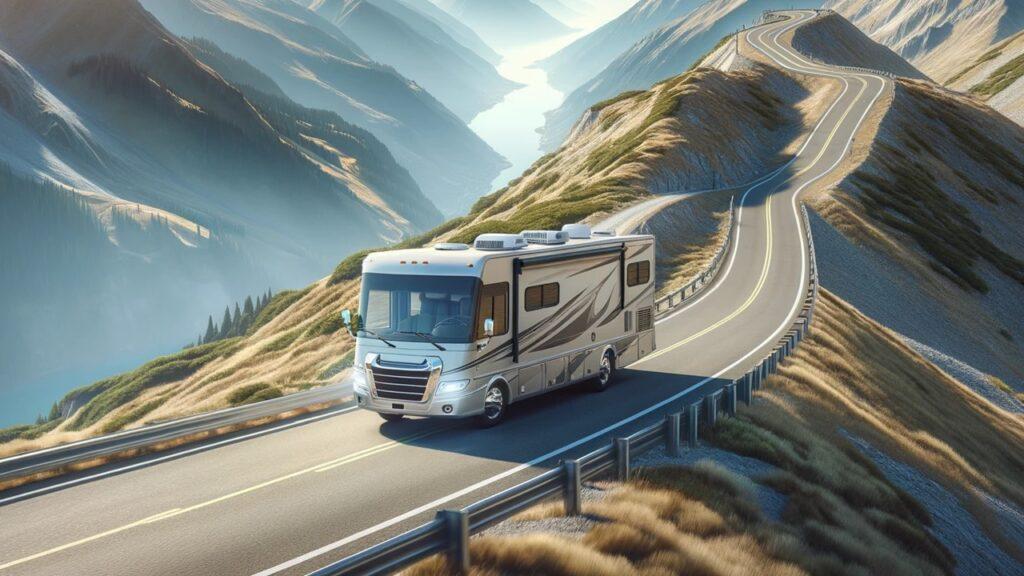
Keeping your RV water hose in top shape is essential for a safe and enjoyable journey. Contaminated water can quickly turn an adventure into a nightmare, posing serious health risks and ruining the taste of fresh water. That’s why it’s important to know the essential tips for storing RV water hoses to prevent contamination. Contamination can sneak up on you, with bacteria and dirt finding their way into your hose if it’s not properly maintained. By understanding how to clean and store your hose correctly, you can ensure clean, safe water every time you hit the road. In this guide, we’ll walk you through practical steps to keep your water hose in great condition, helping you avoid any unpleasant surprises. Follow along, and you’ll be well-prepared to keep your RV’s water system clean and reliable for all your adventures.
What is Water Hose Contamination?
Contamination in RV drinking water hoses happens when harmful substances like bacteria, mold, or chemicals infiltrate your water supply. It’s a big deal because it can ruin your trip and pose serious health risks. Contaminants can sneak into your hose through dirty water sources, improper storage, or lack of regular cleaning.
There are several types of contaminants to watch out for. Bacteria and mold love moist, dark places, making your water hose an ideal breeding ground if not properly maintained. These microorganisms can multiply quickly, causing bad smells and potential illnesses.
Additionally, chemicals can leach into the hose material, especially if it’s not designed for drinking water. By understanding what contamination is, you can better apply essential tips for storing RV water hoses or RV heated water hoses to prevent contamination, keeping your water safe and clean.
Properly addressing these contaminants involves regular cleaning, correct storage practices, and using hoses specifically designed for drinking water. This proactive approach will keep your RV water system functioning efficiently and safely.
Why Preventing Contamination Matters
Preventing contamination in your RV water hose is crucial for several reasons. First, contaminated water can make you sick. Drinking or using water from a dirty hose can lead to stomach problems, infections, and other health issues. Keeping your water clean is vital for everyone’s health on your trip.
Moreover, contamination can shorten the life of your water hose. Bacteria, mold, and chemicals can break down the hose material, causing cracks, leaks, and poor water flow. This not only means you’ll need to replace your hose sooner, but it also risks contaminating other parts of your RV’s water system, leading to costly repairs. Implementing essential tips for storing RV water hoses to prevent contamination helps maintain your hose’s durability and performance.
Additionally, clean water makes your RV experience more enjoyable. Whether you’re cooking, cleaning, or taking a shower, clean water enhances every aspect of your trip. Regular cleaning, proper storage, and using the right type of hose are key steps to prevent contamination. By taking these precautions, you ensure your water stays fresh, your equipment remains in good condition, and you can fully enjoy your RV adventures without worry.
Types of RV Water Hoses
Choosing the right RV water hose is key to preventing contamination and ensuring safe water for your travels. Various materials and designs are available, each with its own pros and cons. Knowing these differences helps you make the best choice.
Standard vinyl hoses are lightweight and budget-friendly but can kink easily and are less durable. They’re also more prone to chemical leaching, which can contaminate your water. On the other hand, polyurethane hoses are more flexible and kink-resistant. They’re also safer for drinking water, as they contain fewer harmful chemicals. However, they can be pricier.
Silicone hoses are another great option. They’re durable, flexible, and can handle extreme temperatures, making them ideal for hot water use. Plus, they’re safe for drinking water, though they tend to be the most expensive. Stainless steel hoses offer unmatched durability and are highly resistant to kinking and crushing. They’re safe for drinking water and can withstand high pressure but can be heavy and harder to maneuver.
When picking an RV water hose, consider durability, flexibility, and safety for drinking water. Implementing essential tips for storing RV water hoses to prevent contamination means choosing the right hose and maintaining it properly. By selecting the appropriate hose type and following best practices for storage and cleaning, you ensure a safe and enjoyable RV experience.
Selecting the right hose and maintaining it properly ensures your RV water system stays clean and efficient, allowing you to focus on enjoying your journey.
Key Features to Look for in RV Water Hoses
Choosing the right RV water hose is crucial for preventing contamination and ensuring safe drinking water. When selecting a hose, there are key features to look for. First, UV resistance is essential.
This feature prevents the hose from degrading under the sun’s rays, maintaining its integrity and safety. Additionally, look for hoses that have FDA approval and lead-free certification. These certifications ensure that the hose materials are safe for drinking water and free from harmful chemicals.
Another critical feature is kink resistance. Hoses that resist kinking are easier to use and less likely to suffer from damage that can lead to contamination. Durability is also important; a durable hose will last longer and withstand the wear and tear of regular use.
By focusing on these features, you can implement the essential tips for storing RV water hoses to prevent contamination effectively and keep your water supply safe.
Tips for Storing Your RV Water Hose Safely
Proper storage of your RV water hose is essential to prevent contamination and extend the hose’s lifespan. Here are some essential tips for storing RV water hoses to prevent contamination.
Step 1: Clean the Hose Thoroughly
Before storing your hose, make sure it’s clean. Run clean water through the hose to flush out any debris or contaminants. Additionally, use a hose brush or cleaning solution designed for water hoses to remove any buildup inside. Cleaning the hose thoroughly ensures that no harmful bacteria or mold can grow while the hose is stored.
Step 2: Drain All the Water
After cleaning, drain all the water from the hose. Water left inside can lead to mold growth and unpleasant odors. Hold the hose vertically and let gravity do its work, or use a hose draining tool to remove any remaining water. Ensuring the hose is completely dry before storage is crucial for preventing contamination.
Step 3: Use Hose Caps or Covers
To protect the hose ends from dirt and bugs, use hose caps or covers. These accessories keep contaminants out and maintain the cleanliness of your hose. Caps and covers are inexpensive and easy to use, making them a simple but effective solution.
Step 4: Store in a Cool, Dry Place
Choose a storage location that is cool, dry, and away from direct sunlight. UV rays can damage the hose material over time, leading to cracks and leaks. A shaded area or an indoor storage space is ideal. Additionally, avoid storing the hose in a damp environment, as moisture can promote mold growth.
Step 5: Coil the Hose Properly
Coil the hose neatly to avoid kinks and tangles. Start from one end and make large, even loops. Avoid tight coils, as they can cause the hose to bend and weaken. Proper coiling not only prevents damage but also makes it easier to use the hose next time.
Step 6: Use a Hose Reel or Storage Bag
For added convenience, consider using a hose reel or storage bag. A hose reel keeps the hose coiled and protected, while a storage bag can keep it clean and easy to transport. These tools can help you store your hose more efficiently and protect it from damage.
Storing your RV water hose correctly is a simple yet vital task. By following these steps, you can ensure that your hose remains clean and ready for use. Proper storage not only prevents contamination but also extends the life of your hose, ensuring safe and enjoyable RV adventures. Implementing these essential tips for storing RV water hoses to prevent contamination will help you maintain a reliable water supply and enjoy peace of mind on the road.
Inspecting and Maintaining RV Water Hoses
Regular inspection and maintenance of your RV water hose are crucial to ensure its longevity and performance. Start by inspecting your hose every few weeks or before each trip. Look for any visible signs of damage like cracks, leaks, or mold. If you spot any issues, address them immediately to prevent contamination.
Maintenance involves more than just cleaning. After each use, make sure to drain and dry the hose thoroughly. This prevents mold and bacteria from growing inside. If you notice any minor damages, repair them using appropriate hose repair kits. Additionally, replace the hose if it shows significant wear and tear. Implementing these essential tips for storing RV water hoses to prevent contamination will keep your water system safe and efficient. Regular care not only prolongs the life of your hose but also ensures that you always have clean, safe water on your RV adventures.
Wrapping It Up!
Proper storage and maintenance of your RV water hose are vital for ensuring a safe and enjoyable journey. Recap the essential tips for storing RV water hoses to prevent contamination: choose the right type of hose, clean it thoroughly, drain all water before storage, use hose caps or covers, and store it in a cool, dry place. Regular inspection and maintenance will further extend the life of your hose and keep your water supply safe.
Emphasizing the importance of these practices cannot be overstated. Contaminated water can pose serious health risks and damage your RV’s water system. By following these guidelines, you ensure that your water remains clean, your equipment lasts longer, and your trips are worry-free. Proper care of your RV water hose is a small investment in time and effort that pays off with every mile you travel. Keep these tips in mind, and you’ll be well-prepared for all your RV adventures, enjoying fresh, safe water every step of the way.
Related FAQs
How Often Should I Replace My RV Water Hose?
Replace your RV water hose every 1-2 years or if you notice significant wear and tear.
Can I Use a Regular Garden Hose for My RV?
It’s not recommended. Use an RV drinking water hose to ensure safety and avoid contamination.
How Do I Know If My RV Water Hose Is Safe for Drinking?
Look for hoses labeled as “drinking water safe” with FDA approval and lead-free certifications.
What Should I Do If My Hose Smells Bad?
Clean it thoroughly with a vinegar-water solution, rinse well, and let it dry completely.
Can I Leave My Water Hose Connected to the RV All the Time?
It’s best to disconnect it after each use to prevent pressure buildup and contamination.
As outdoor enthusiasts ourselves, we understand the significance of reliable gear that can withstand the elements and support you throughout your journey. We try to provide as much real life information with our guides and how tos to the readers as possible. Our honest and transparent reviews of essential outdoor gadgets and products are rooted in testing and experience. We take great satisfaction in offering unbiased evaluations, ensuring that you can make informed decisions when investing in outdoor gear. As an affiliate website, we may earn a small commission from some of the products we feature. However, rest assured that our opinions are not influenced by this, and your trust is always our top priority.



